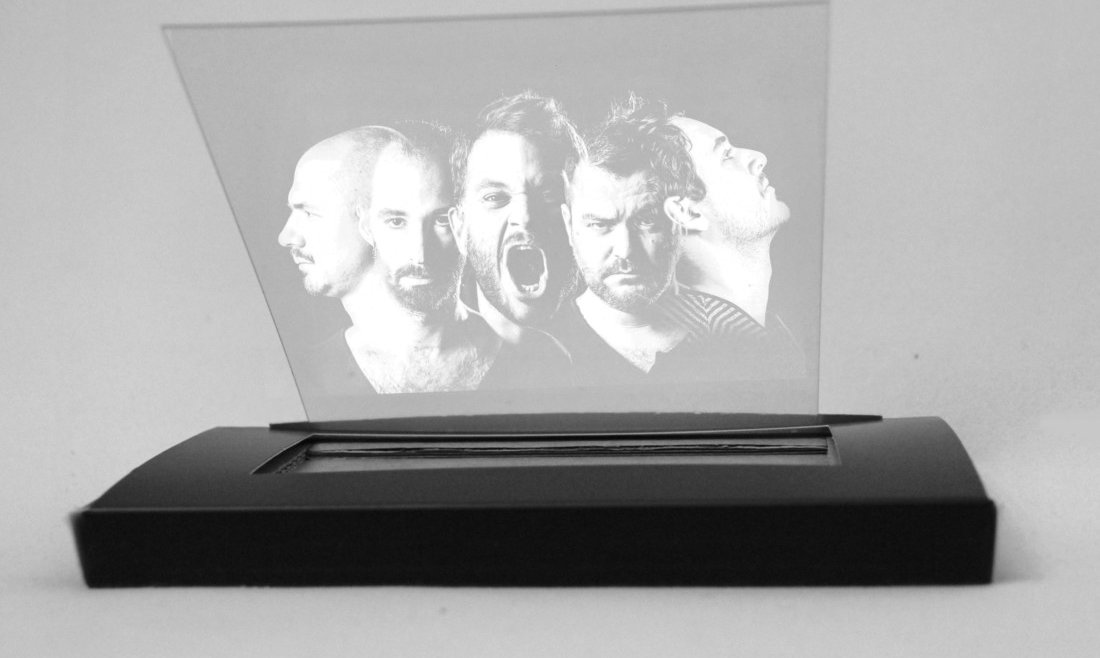Although the day when we see genuine holograms portrayed in Hollywood movies is still far away, the events industry has been using a related technology for several years now; hologram screening can serve as quite the spectacular show element.
But how does it work exactly? And how likely is it that we’ll experience holograms in our homes within a few years? Is it even remotely possible?
Light Technologies & Dark Environments
Before discussing how to, let’s differentiate the two most important concepts that appear in this post. First, we’re mostly talking about holograms, which are 3D images of objects created by holography.
Second, there’s holography, which is both the physics and the technique of creating holograms.
Projection technology is based on complex mirroring architectures. In the particular case of shows and events, the graphical elements of the hologram appear within the unique environment of a stage. However, we can also make real people appear on the stage using holographic projection, enabling the live debut of performers as holograms.
A darkened area and environment are essential prerequisites to ensure the best impact and the professional hologram experience at a live show. Nonetheless, guaranteeing such circumstances is rarely a challenge on stages as well as in event areas.
Holographic Content
With the location and its characteristics set to enable and enhance holographic projections, let’s look at the “content” that is to be projected as a hologram. As a rule of thumb for providing a professional hologram experience, the content should always be explicitly made to be projected as a hologram; it needs to be suitable for holographic projections. This special content creation involves numerous tricks that—if implemented meticulously—will ensure spectacular stage productions.
Can Holograms Be Adapted to Mobile?
And what about personal, mobile hologram experiences? Is it even possible when we described a large-scale application of hologram technologies; sure, it might work on the physical stage where expensive, high-tech gadgets and assets are available, but indeed that can’t be replicated for mobile devices.
Or maybe it actually can be. Perhaps we can sit down at home and enjoy a live show or concert via 3D holograms.
Since the pandemic’s start in 2020, the events industry has suffered some of the most considerable economic impacts due to lockdowns and restrictions that prevented organizing almost any event. Consequently, events have also been pushed into the online space. Still, understandably it’s much more challenging to implement a lifelike show with the performers and their audience being separated and stripped off the physical feedback that makes any performance so much more engaging than just watching a live stream. Because of this, the events industry had to and is still looking for hybrid solutions that bridge the gap between physical and virtual presence… by offering both to participants.
A Gap in the Streaming Market
Adopting hologram technologies and applying them in this hybrid environment is a brand-new challenge in the market.
But why shouldn’t we make video calls, which have become routine, everyday elements of our lives, actually exciting and fresh by adding something boldly new to them?
At the same time, in the ever-growing world of on-demand and streaming video content, a portal that combines exclusive content with hologram experience is an idea that could potentially fill the void of a massive gap in the current market.
Interested to know how that could be potentially realized? Stay tuned for our upcoming blog posts that delve deeper into hologram technologies!
While not yet equipped with hologram tech, our Well-Architected, full-scope OTT solution, ENT.360 is an enterprise-ready, software-only AWS native architecture with DAI (Dynamic Ad Insertion) and SSAI (Server-Side Ad Insertion) implementation included. With it, we architected and developed a global, monetized content distribution platform for a market-leading streaming service provider, supporting 18+ languages across 15 device platforms in 50+ countries—as well as one of the most significant streaming events in the pay-TV industry.

